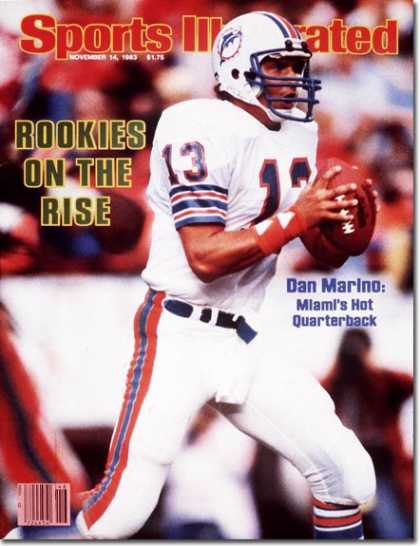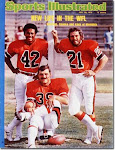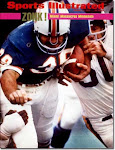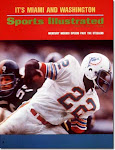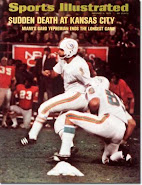South Beach Hoosier will have his own take on these developments soon, which loom larger now that's it's more likely than ever that Hank Goldberg's prediction of a few weeks ago on his WQAM radio show -pre-dating Barry Jackson's Herald column by WEEKS- was 100% right: that the U-M will make the decision that any money given to the City of Miami for Orange Bowl renovations is money down a black hole, money which could be better spent on the U-M campus.
That has the practical effect of increasing the likelihood that the Hurricanes WILL move to Dolphin Stadium in two years when their current city lease runs out. That they will make more money, about $4.5 million per year, for doing so, plus, supposedly, get the parking revenue, is an added benefit.
A blog that I recently became aware of which covers the neverending Marlins stadium debacle, complete with MP3 files -as opposed to the larger issue of the future of the Orange Bowl and any development there- is called "The Marlins Ballpark News" at http://capefish.blogspot.com/index.html
It's well worth bookmarking and checking fairly frequently, since they provide the sort of excellent resources, documentation and minutiae that I love, that most -though not all-
South Florida sportscasters, radio and TV, have NEVER bothered to look for, much less actually read and become familiar with, so they know what the TRUE facts are.
As someone who was very involved -TWICE- with a well-known & well-funded ownership group's effort to bring an MLB team to Northern Virginia from 1994-2003, The Collins Group,
I recognize that kind of willful ignorance from local sports media types from my own experience with the Washington, D.C. media, where not knowing the facts never prevented them from having and sharing an opinion on the air, however poorly informed.
There as here, sports reporters and radio hosts largely took their lead from whatever the local newspaper wrote, but there, that was a death knell for Northern Virginia's interests, since The Washington Post's Editorial Board always expressed a very clear preference on their Op-Ed page for a team in DC proper, even playing the race card when necessary, even though the overwhelming majority of fans who'd attend the games -just like the prospective owners and best stadium locations- were in Northern Virginia, the richest market in the country without an MLB team.
In his September 22, 2006 posting on his South Florida Sun-Sentinel blog,
http://blogs.sun-sentinel.com/sports_college_hurricanes/ excellent Sun-Sentinel Hurricanes beat reporter Omar Kelly, who was on ESPN just about everyday following the Bryan Pata murder, had this little nugget -in orange- about the firms the City of Miami selected for work on the Orange Bowl, info that I didn't see anywhere else, though I WAS looking:
"I can't help but think Richt is also atop FSU's list of possible replacements for Bobby Bowden, who I believe will die before retiring. Speaking of the Seminoles, would you believe they are now pushing for a covered practice facility that allows them to get their work done during thunder storms. UM also needs one, badly, but its fairly low on the LONG LIST of things Miami's athletic program needs at the present moment (expanded space for academic support should be No. 1). Plus, exactly where would UM put a bubble? Bowden wrote his president a letter this week about getting a covered facility and I'm willing to put $100 on FSU building a bubble within the next two years.
Ohhhhhhh, the power of being a state school. If the Baltimore Orioles can get state money for a spring training facility in Ft. Lauderdale why can't the state chip in to help with the renovation of a Miami landmark, the Orange Bowl. In case you missed our report two weeks ago, the Miami city commission approved hiring HNTB, a Kansas City architecture firm, and Bermello Ajamil & Partner, a Miami design, engineering and planning company, to provide the architectural and engineering services for the OB. They beat out six other proposals. HNTB has worked on numerous stadium renovation projects, including Ohio State, University of Georgia, and Michigan and Michigan State. The renovation project is set to begin this summer instead of in December like initially planned. I wouldn't keep holding my breathe if I were U considering the Florida Marlins are still looking to build a downtown ballpark and MLB has been secretly acquiring land near the Miami Arena."
______________________________________________________________
Miami Today News
http://www.miamitodaynews.com/news/070322/story7.shtmlRedevelopment agency won't help fund stadium, county official saysBy Dan Dolan
The Overtown-Park West Community Redevelopment Agency won't be used as a piggybank to help fund construction of a $490 million baseball stadium in downtown Miami, Assistant County Manager Ian Yorty said last week.
"Between the City of Miami and the county, we feel we have the capacity in tourist bed-tax dollars to fund the project," said Mr. Yorty, spearheading the county administration's negotiations with the Marlins and Major League Baseball. "We feel we can achieve our goals without CRA funding."
That's good news for officials and civic leaders who support plans to build the stadium on nine acres of government-owned land north of the county's Stephen P. Clark Center on Northwest Third Street.
County commissioners and Miami city officials have threatened to torpedo the proposal if community redevelopment cash is needed to build the 37,000-seat retractable-roof stadium the Florida Marlins want. After Miami Mayor Manny Diaz proposed tapping CRA funds two months ago, outraged county and city officials revived the Orange Bowl as an alternative site.
Mr. Yorty said the spat over use of community redevelopment money is a tempest in a teapot. Even though Miami City Manager Pedro "Pete" Hernandez has publicly said that community redevelopment agencies would contribute $15 million to stadium financing, Mr. Yorty said using existing Overtown-Park West funds was never part of the plan.
"Under the existing life of the CRA, it will not generate significant dollars for any project," Mr. Yorty said. "In relation to the baseball stadium, it was never conceived that the CRA would provide any existing revenues for funding the project."
Mr. Yorty said that could change after 2016, when the agency is scheduled to be terminated. When the agency's mandate expires, the county and the city could bring it back to life and expand its sphere, he said.
"Mr. Hernandez' $15 million figure was a target developed during an exercise to determine what would be the economic impact if we extended the CRA's life, expanded its boundaries and had the stadium as an anchor to accelerate other investment in the area," Mr. Yorty said.
"There was never any intention to take away money from other projects, including the construction of affordable housing. With tourist-tax dollars, which can only be used for projects like a stadium, we feel we have identified an appropriate revenue and funding source."
Mr. Yorty said the county is negotiating key clauses of a stadium deal. "We're working on a guarantee that ties the team to the ballpark and ensures that they'll play in Miami for at least the terms of the public debt on the stadium," Mr. Yorty said. "We're also working out a cost-run provision that will minimize the county's exposure to rising prices." Under the current proposal, the county would own and finance a stadium, but the Marlins would build it. The team has indicated it would absorb any costs above the current $490 million price tag, which includes interest on construction loans. Mr. Yorty said the county wants an ironclad guarantee that it would not be stuck with the tab. Three bills that would give the Marlins a $60 million sales-tax rebate over 30 years are progressing through the Legislature. Local officials say a tax break is key to stadium construction.
____________________________________
Letter to the Editor
Miami Herald
SAVE ORANGE BOWLMarch 21, 2007
When will Miami officials finally do something right for the historic Orange Bowl? It has been an important part of Miami and has hosted some of the greatest sport events of all time. Will the Orange Bowl just fade away as other great sports arenas in this country have? Will this property end up being used for even more condominiums? If they allow University of Miami football to leave, that will be the final stake through the heart.Do we want Pro Player Stadium to be the only football stadium in this town? Is Miami able to have anything in this city other than high-rises? The city has made many bad decisions in the past -- the Miami Arena, Miami Marine Stadium, the list goes on.Do what's right. Plead, kick, scream, overspend, sue -- anything. But, please, don't let the Hurricanes leave.
FRED BURNS, Palmetto Bay
__________________________________________________
Miami Herald
March 16, 2007
3 Marlins stadium bills advanceYUDY PINEIRO
TALLAHASSEE --
Three bills that would give the Marlins a $60 million subsidy to help the team build a $500 million stadium breezed through state Senate and House committees Thursday.
But the team has seen stadium bills progress in the Legislature before, only to die at the end of the session.
That's one reason there are three Marlins bills this year. They were filed by Miami-Dade lawmakers who are mindful of the past failures.
The early successes are a good sign the bill will go farther this year, but some members of the Senate -- the traditional death chamber for the bill -- warned fellow lawmakers not to get their hopes up.
A $60 million tax break for a retractable-roof stadium, they said, could be a tough sell in a year in which the economy is slowing down, meaning there will be less money to spend.
"We will have approximately a billion less," said Sen. Ted Deutch, a Boca Raton Democrat. "Our constituents will ask us, how do you agree to spend $60 million on a sports facility when the needs of the state are so great?"
Senators, mostly from Broward, also put the burden on Miami-Dade County and city officials to prove that a new, publicly owned stadium would be good for the state.
At the heart of the debate is whether the money is a tax rebate or tax subsidy. The Marlins would get $2 million a year over 30 years. It would be rebated by the state from sales taxes generated at the new stadium. Some economists say it would end in a net loss for the state.
But Miami-Dade County and city of Miami officials say the ballpark will do the opposite, boosting sales tax revenues and fueling nearby development. They say the ballpark will generate the $2 million in annual sales taxes it needs to qualify for the break, and top that with an average of $6.6 million more."
Since the facility is going to be placed in a new market, it's going to attract people who aren't fans of movies, may not necessarily go out to eat, but are big fans of baseball," said state Rep. Carlos Lopez-Cantera, a Miami Republican who is sponsoring the House bill.
Broward senators also say it's time for Miami-Dade County and Miami officials to settle on a site, preferably closer to the county line. But the two options being considered are in downtown
Miami and at the Orange Bowl. The Marlins currently play at Dolphin Stadium, near the county line.
"As unhappy as my constituents are now, when I tell them that I've helped fund something that will be less convenient for them, they will be even less happy," said Senate Minority Leader Steve Geller, a Hallandale Beach Democrat, who muttered "grumble, grumble" before voting in favor of the Marlins bill.
So far, sponsors have been effective in rushing bills through committees, hoping to get them to the floor of the House and Senate before the 60-day legislative session's end. Last year, the bill died just before the session ended at midnight.
Two weeks into the session, the House proposal has two committee stops and the Senate bills have one.
House Minority Leader Dan Gelber of Miami Beach, who wants delegation members to focus on healthcare and education issues instead, reminded fellow lawmakers about the Senate committee stop, warning that the bill may face trouble there.
Sen. Mike Fasano, a New Port Richey Republican who chairs the Transportation and Economic Development Appropriations Committee, which gets the bill next, could crush the Marlins' chances. If the Marlins get a second subsidy so should the state's eight other professional teams, he says. Each franchise is allowed one. The Marlins already got one to help retrofit its current stadium for baseball.
Despite all that, Thursday's votes swelled lawmakers' confidence.
The Senate Finance and Tax committee passed almost identical bills sponsored by senators Rudy Garcia and Alex Diaz de la Portilla. Both want to bring the stadium home.
De la Portilla, who couldn't make it to the meeting, said: "My bill is better."
"I was there by myself," fired back Garcia.
House Speaker Marco Rubio referred to the passing of the two similar Senate bills.
"Maybe we'll get two stadiums," he quipped.
Miami Herald staff writer Mary Ellen Klas contributed to this story.
Copyright (c) 2007 The Miami Herald
_____________________________________________________________Miami Today Newshttp://www.miamitodaynews.com/news/070315/story-viewpoint.shtmlNegotiations for "Baseball in our time' ignore the basicsBy Michael Lewis
As county and Miami city officials debate where to dig a money pit in which to fling hundreds of millions for Major League Baseball, they're wrestling with the wrong questions.
Debate shouldn't focus on whether to shoehorn a stadium into a downtown site that's far too small or instead spend taxpayers' money to tear down the historic Orange Bowl and build there.
Site should come after the key issues, not before.
If I were elected to safeguard my community's wellbeing, I'd be asking:
•Should we be handing a business $800 million — a $500 million stadium with bond interest over 30 years — or do we have better uses for public funds? Anyone who can't find better doesn't deserve to be kindergarten president much less commissioner.
•What would the public get for a handout to the Marlins? Studies prove baseball doesn't attract tourists or create jobs. Tourists are here anyway and would spend their money on something else instead of a ballgame. Workers at a new ballpark would just leave jobs at Dolphin Stadium.
•Can Miami be major-league without Major League Baseball? Ask Paris, London, Rome, Buenos Aires, Madrid or Ö Somehow, all seem to muddle through. Those facts should be decisive, but government is still hell-bent on bending over for baseball. So because the city and county are willing to defy logic and open taxpayers' wallets, even the most pliant commissioner ought to ponder these issues:
•How much is too much? A $500 million stadium is on the table — that baseball plug number substituting for the $168 million that was on the table for what became the $472 million-and-counting Carnival Center for the Performing Arts.
Even assuming costs don't escalate — though they will — $500 million plus interest translates into a construction cost of about $13.50 per fan at every game for the next 30 years at the 2 million fans minimum County Manager George Burgess expects. By the way, the Marlins haven't drawn that well in a decade. The lower the attendance, the higher the cost per fan.
Is that a smart subsidy? We'd be better off letting the Marlins build their own stadium and just paying the team $10 for every fan who attends.
•If we build it, shouldn't the Marlins pay? Their rent would never cover costs. The Marlins would pay $10 million to $12 million in rent a year. Yet the public's annual cost to retire construction bonds would be about $27 million, not counting costs of actually running the stadium.
•Can the Marlins uphold their bargain?
That's pivotal. The deal on the table says taxpayers would fund almost all construction costs, yet the Marlins would choose the design, run the job and be at risk for overruns.
Given the cost escalations at Miami International Airport and the performing-arts center, that might sound like a smart guarantee — if we could count on the Marlins.
Unfortunately, we can't. Even if the operators had credibility, they still act like paupers — perhaps rightly so.
They bought the team with money borrowed from Major League Baseball that's not repaid. The stadium deal calls for them to pay $45 million, which would also be borrowed. A team deep in debt that overran construction costs by a hundred million or so — low by Miami standards — would leave the bills once again on taxpayers' backs, guarantee or no guarantee.
That, friends, is no guarantee. It would give the Marlins a free hand to spend whatever they wanted, content in the knowledge that they'd never pay a dime of it.
One thing is sure: Major League Baseball will never pay for anything. The league's owners all demand a stadium but not on their nickel.
The only way Marlins owners could be responsible for overruns is if the present group flipped the team to someone with a bankroll. But that would happen only after a stadium rises and markedly increases the value of the team — and only after taxpayers have funded all cost overruns incurred by the Marlins Construction Co.
Unfortunately, commissioners will never examine a guarantee against inevitable overruns. A guarantee gets them off the hook with voters, even if its value is less than the guarantee Neville Chamberlain returned with in the Munich Agreement with Hitler assuring "Peace in our time." So, the final question: Isn't it the height of stupidity to sign a binding agreement during negotiations that if either the city or the county sees the light and for any reason rejects a final contract, or if the Marlins make unreasonable demands, taxpayers would reimburse the Marlins for all their expenses, accumulated over the years, in seeking a new stadium?
That, good friends, is what the deal on the table projects — if officials sign, either the Marlins get a new stadium or taxpayers pay them for their trouble.
Because city and county commissioners sway with the breeze and the Marlins are prickly and unpredictable, how could we possibly sign up for what will become a straight payoff to the Marlins when a deal blows up?
With all of those very real issues to debate, the city and county have ignored the basics they should have tackled first.
Instead, they've done the predictable: They've skipped ahead to debate in which location we will be made fools of.
_____________________________________________
Miami Today News
http://www.miamitodaynews.com/news/070315/story5.shtmlRegalado: CRA money shouldn't be dangled in stadium talksBy Risa Polansky
Community redevelopment money is not a carrot to be dangled in front of Florida Marlins or Major League Baseball officials — or anyone looking to dip into the resources to back efforts disguised as development projects, Miami City Commissioner Tom·s Regalado said.
Mr. Regalado's comments followed City Manager Pete Hernandez' announcement at a Miami-Dade County Commission meeting last week that $15 million in CRA funds was earmarked for the project.
"I think it's unfair to use the excuse of redevelopment for the area in order to use the funds that are supposed to be used in real development for the poor area," Mr. Regalado said. "It is unfair to the Marlins, to the city manager, to the county manager, to anyone involved for them to know maybe we can use these funds or maybe not. So let's vote on it."
Mr. Regalado proposed a resolution for the Miami Community Redevelopment Agency board — the five Miami city commissioners — "clearly stating that no CRA funds should be used for the project of the baseball stadium, the port tunnel, the performing arts and the streetcar," he said. "It's on the draft agenda (for March 26). Even if it's pulled for some reason, I will bring it as a pocket item anyway" calling for a vote even though it doesn't appear on the agenda.
A majority of the CRA board voted informally last month to reject a proposal to spend agency money on a ballpark.
Now, Mr. Regalado is looking to put an end to a string of promises by Miami city officials who until last week continued to name redevelopment monies as a funding option for a ballpark despite the agency board's resistance as well as opposition from county commissioners.
City Commissioners Regalado and Michelle Spence-Jones, chairwoman of the CRA, said last week that they would vote no on any stadium plan involving redevelopment funds, causing Mr. Hernandez to change his tune.
"Both the county and the city administrators received a very strong message that commissioners were very concerned," Mr. Regalado said. "As we continue to negotiate with Major League Baseball and the Marlins and finalize our financial plan, it looks that we should not consider CRA money for the construction of the stadium.
"We have to put our vote where our mouth is," he said. "We need to send a clear message — we cannot be on the fence."
Tourist-tax dollars would be a more appropriate source of funding for the city's $108 million contribution to the stadium project, he said.
"The tourist dollars collection went up," he said. "Tourist dollars are meant to be used for that."
Miami commissioners unanimously passed a resolution allowing Mr. Hernandez to continue negotiations with the county, Major League Baseball and the Marlins to pursue a stadium.
They removed the site-specific aspect from the plans, resistant to committing to a downtown location they fear would inhibit the completion of two projects in the area — a children's courthouse and police training facility.
The consensus among commissioners was to further explore the Orange Bowl as the Marlins' future home.
"We're glad to have that option open again," said Commissioner Joe Sanchez.
He said plans to put millions of dollars in bond money into Orange Bowl renovations simply for use by the University of Miami football team doesn't make as much sense as using the money to create a baseball stadium on the site.
"We should put it to good use," he said of the allotted funds and the land. "I think the best use would be to put a stadium on the site."
The Hurricanes are likely on their way out, former Miami city manager Joe Arriola said Monday morning on a sports-talk show on WAXY. They are 90% likely to move to Dolphin Stadium, he said, calling the days of the Hurricanes in the Orange Bowl "numbered if not over."
That poses a potential problem for the FIU Golden Panthers, who plan to play their upcoming football season in the Orange Bowl as construction begins on their new stadium on campus.
If the city were to begin work on a baseball stadium, FIU would need to find another temporary home.
Those issues notwithstanding, Ms. Spence-Jones agreed that "the Orange Bowl is the best location for the stadium" but said she hopes the CRA boundaries for the Overtown and Omni districts will be expanded to further support redevelopment in the area.
She said she would like to see "the same level of excitement" officials have exhibited toward the Marlins toward expanding the life and boundaries of the CRA, she said.
© Copyright 2007 Miami Today
____________________________________________________________
South Florida Sun-Sentinel
http://www.sun-sentinel.com/sports/sfl-sphyde14mar14,0,4279407.column?coll=sfla-sports-frontHYDE: Nostalgia's all Orange Bowl holdsDave Hyde, Sports Columnist
March 14, 2007
Crush it. Bomb it. Level it. Bury it. Say it with sadness, if you want. But the time has come to retire the Orange Bowl, hasn't it?
Come on, wake up, the 1980s are gone.
If the Orange Bowl really needs $175 million in improvements to hold University of Miami football games, as officials say, let's join hands as a sports community, sing Kumbaya for the good times it delivered and say sayonara.
And if that money and land can go toward a new Marlins home, as officials also say, we even can dispense with the singing and hand holding.
Either way, it's time for an Orange Bowl-ectomy (and maybe a corporate sponsorship for the knockdown: Orange Crushed by Orange Crush?)
There's this idiotic notion about this somehow being a referendum on Hurricanes football.
That by not pumping an obscene amount of public money into a stadium far past its prime that college football loses its traditional digs and so everyone hates Miami. Give me a break.
How does it make sense to spend $175 million to renovate the Orange Bowl for what amounts to six Miami football games a year?
How does it make sense when the school could make more money than recent years by moving to Dolphin Stadium?How does it make sense when those millions and that land could help build a Marlins ballpark and answer their big problem?
Here's how all that makes sense: It doesn't. There's no workable argument for the Orange Bowl working at that price tag for Miami football.
Nor is this a vote against the Orange Bowl's history, as others have said. Who doesn't love the stadium's memories? Love knowing this is where the '72 Dolphins won? Where the '83 Hurricanes rose? Where Dan Marino made his entrance, Joe Namath waggled his victory finger, Doug Flutie met Hail Mary, Satchel Paige pitched, Sugar Ray boxed and even Black Sunday was filmed?
Again, who doesn't embrace all that?
As long as the urinals aren't overflowing. And the light poles aren't swaying. And you're sure the upper deck is structurally sound.
Another thing about all those memories: They're at least a couple of decades old. See, there's a gulf between the Orange Bowl as a concept and the Orange Bowl as a stadium. It's a 20-year gulf, to be sure. Joe Robbie saw it first and built his own stadium.
Look what's happened since. The Super Bowl? Gone. The Orange Bowl Classic? Gone. Any sense the Orange Bowl is worth $175 million to upgrade?
Long, long gone.
Here are some of the venues leveled in recent years: Chicago Stadium, Boston Garden, Detroit's Tiger Stadium, Cleveland's Municipal Stadium, Seattle's Kingdome, Cincinnati's Riverfront Stadium, Philadelphia's Veterans Stadium, Pittsburgh's Three Rivers Stadium ...
Oh, and Yankee Stadium is on the clock.
Despite some diplomatic hand-wringing, you can be sure Miami politicians realize what should be done to the Orange Bowl. University officials must, too, even if they don't want to say so.
The Marlins want a downtown Miami stadium. Ultimately, they'll take what they're given. If the best deal is on Orange Bowl land, then it's on Orange Bowl land.
As it is, you can cry for the Orange Bowl, if you want, just as you might have winced at watching the Fifth Street Gym or Bobby Maduro Stadium go. Not everything old should go. Fort Lauderdale's Lockhart Stadium shouldn't be demolished to give the Baltimore Orioles a bigger spring training.
But the Orange Bowl's going isn't about a slap at college football or a sign that memories aren't important. It's about common sense, financial smarts and what's best for tomorrow. There's a word for that: Progress.
________________________________________
http://www.miamiherald.com/588/story/38641.html
Miami Herald
March 12, 2007
New Marlins stadium in a squeeze playCHARLES RABIN
The Florida Marlins' latest hope for a new ballpark focuses on two publicly owned properties: one, the old football stadium in Little Havana; the other, a nine-acre plot in downtown Miami that could prove costly.
County Manager George Burgess recently proposed spending $490 million to build a 37,000-seat ballpark with 60 suites and a retractable roof on what now is mostly a parking lot just north of Government Center.
The plan was quickly shot down by a majority of county commissioners. They were worried a Children's Courthouse and a Miami police training academy that are planned for the site could be delayed and cost more at a new location.
Already, $3.7 million in taxpayer money has been spent designing those buildings.
The commission chose to forward Burgess' plan to the state Legislature without mentioning a particular site.
Once again, the Orange Bowl comes into play.
Last year, a plan to build a baseball stadium next to the aging Orange Bowl fell apart when state legislators ended their session before discussing a bill that would have plugged the Marlins' $30 million shortfall.
This time, the problem is twofold: The team still needs that money, and City Manager Pete Hernandez must navigate negotiations between the University of Miami and the city to improve the decaying structure, while convincing his commission that the Marlins need to play there, too.
EITHER/OR
The problem is, it likely has to be one or the other.
''I don't think that's a scenario in this go-round, having both,'' said Hernandez.
The 70-year-old Orange Bowl is home to a UM football team that is threatening to leave if Miami doesn't spend about $170 million to renovate the structure.
The team is expected to make its decision in about 45 days.
But Miami can't afford both projects, Hernandez said.
So, ''we have to be very cautious [in negotiations] right now,'' he said.
Real estate experts interviewed agree the Orange Bowl, with its vast expanse and less-intensive underground infrastructure, would be an easier place to build a new stadium.
''Maybe it's time the Orange Bowl gets torn down,'' said Michael Y. Cannon, managing director of South Florida's Integra Realty Resources.
Land downtown around Government Center sells for about $9 million an acre. Mary Conway, Miami's chief of operations, says she's not aware of any other available city-owned property where a training center for Miami police could be built.
County Budget Director Jennifer Glazer-Moon said talks are under way with Florida East Coast Industries about building the Children's Courthouse on a tract of land it owns just east of the Government Center.
COSTLY DEAL
Current plans for the two sites take up just under five acres -- two similar sites could cost as much as $45 million, according to Cannon.
Burgess said building on the FEC site could be quicker and cheaper, but some county commissioners listening to his argument weren't convinced because he failed to provide details.
''If the top priority is the Children's Courthouse, why did this come before us with a complete plan for the Children's Courthouse?'' Commissioner Katy Sorenson asked Burgess.
The county manager's response: ``We believe we can build it faster and potentially less expensive.''
Chief Circuit Court Judge Joseph Farina addressed the commission, saying he wanted to make sure county staff doesn't hurt a project he's crusaded almost a decade for. ''I just hope I'm not wrong in keeping the faith with you,'' he said.
PRICEY DESIGNS
Workers have yet to break ground on the courthouse or the College of Policing, but the city and county have paid architects and engineers millions of dollars to design the buildings.
Additional costs involved with changing sites could include surveying, soil tests and moving utilities under ground, landscaping -- even building new right-of-way for supply trucks to enter and exit the buildings, agreed Duncan Broyd, managing principal of the architectural firm HOK, which is undertaking the courthouse project.
''No two sites are alike,'' said Cannon, ``but the biggest problem is finding the land.''
The nine-acre tract the Marlins crave lies on city- and county-owned land between Government Center to the south, Metrorail to the east, Northwest Fourth Street to the north, and the Miami police headquarters on the west.
The $33 million, 102,000-square-foot College of Policing would be built on 1.5 acres just south of Miami police headquarters at 400 NW Second Ave.
Construction could begin by year's end, and be done sometime in 2009.
Kelly Penton, Miami's director of communications, said work on the academy has cost $1.16 million. But Hernandez said little research has been done on an alternative location.
County administrators dismiss talk of added costs, saying there's a chance the 300,000-square-footprint of the courthouse could be picked up and moved at little or no expense. The entire site is about 3.4 acres.
2011 TARGET DATE
Glazer-Moon said construction of the 11-floor, $118 million building could begin next year and be completed by 2011.
The county has spent $2.5 million on its design.
''I just think that our priorities should be children over baseball,'' the Juvenile Court's top judge, Cindy Lederman, said after learning of Burgess' plan.
The judge said she often hears rats scurry along the ceiling of the 30-year-old rotting Juvenile Assessment Center on Northwest 27th Avenue that the county built, then promptly sold to the state for $1.
''This [courthouse] is a mirror of what society feels about [the juveniles],'' Lederman said.
Adding to any delay could be the time it takes Miami and county commissioners to approve any move -- a political hot potato.
SAVE THE CHILDREN
''Let me make this very clear. I leveraged a lot of political capital on not losing the funding source for that [courthouse] building. This is critical to us. As important and nice as baseball may be, the children and the courthouse should not come second to playing ball,'' said County Commissioner Sally Heyman.
Heyman was instrumental in passing a measure three years ago that increased fines for moving traffic violations. It's that money that is going toward the construction of the courthouse.
Burgess has always maintained that if the courthouse plan is affected negatively in any way, he'd fight to stop any attempt to build a baseball stadium downtown.
''We're very intrigued by the urban location,'' said Burgess.
"But there are issues we still have to resolve.''
_______________________________________
Miami Herald
New stadium site still in playMarch 9, 2007
MICHAEL VASQUEZ
Miami city commissioners on Thursday unanimously endorsed a nonbinding $490 million financing plan for a new Florida Marlins stadium, while the push for a downtown location for the facility continued to lose steam.
Commissioners, following similar action by county leaders earlier this week, approved the preliminary stadium funding plan but removed a portion of it that named a nine-acre piece of public land adjacent to downtown's Government Center complex as the top location choice. The question of where to build is left unsettled in the plan.
Criticisms of the downtown site have included its relatively small size and the fact that it would complicate efforts to build a children's courthouse and Miami police training facility/specialized public high school on the same land.
"The downtown site looked good. However, I think that other sites in Miami, including the Orange Bowl, could be very good sites," City Manager Pete Hernandez told city commissioners. Hernandez asked commissioners to endorse the work-in-progress stadium plan on Thursday so it could be presented to state lawmakers in Tallahassee.
The stadium proposal, despite considerable contributions from both city and county governments, still has a $30 million funding gap. Major League Baseball and local elected officials are hoping the Legislature will close that gap by granting a sales tax rebate.
Thursday's vote sends a message to the state Capitol that "the city of Miami wants the Marlins in Miami," Hernandez said.
The Orange Bowl site, which has been the subject of talks for years but has stalled in the past, is now heavily in play again. Its fate may hinge on whether the University of Miami moves its football games from there to Dolphin Stadium, something UM is considering. The school is expected to make a decision within two months.
Logistically speaking, Hernandez said building a Marlins stadium at the Orange Bowl would likely be easier than building downtown, though he declined to rule out the downtown site.
The financing for a stadium breaks down as follows: the city of Miami would contribute about $108 million -- most of it in tourist tax dollars. The city has also talked about pitching in up to $15 million in community redevelopment money, but that idea is not universally popular among city leaders.
The county, for its part, would chip in $307 million -- though the Marlins would repay $162 million of that in rent. The team would put in $45 million of its own.
Almost all the county money comes from tourist tax dollars.Even with city and county financing in place, there is a $30 million funding gap for the proposed stadium.
City Commissioner Joe Sanchez said a big test for the stadium will come next month when city leaders are asked to vote on a binding funding agreement. That agreement could include a chosen site as well as a host of other specifics not present in Thursday's vote."As always, I think the devils are in the details," Sanchez said.
Copyright (c) 2007 The Miami Herald
_________________________________________
Miami Herald
March 8, 2007
OB still 'special' place to playSUSAN MILLER DEGNAN
To University of Miami safety Kenny Phillips, the Orange Bowl is a shrine. He fondly remembers watching games there as a child and could hardly imagine running out of another tunnel -- even if, as he said, "change is good most of the time."
"It probably would be sad if UM had to move to Dolphin Stadium," Phillips said Wednesday after practice, "because running out of the Orange Bowl tunnel is an amazing feeling. The stadium is filled with people and they're all screaming and it looks beautiful. Running out of Dolphin Stadium might not feel the same."
Even imagining playing at Dolphin Stadium in North Dade -- which could happen should UM be forced to change its venue for financial reasons or because a baseball stadium is built at the OB site -- is a strange subject for current Canes.
Some have no ties to the tradition dating to 1937, still waiting for the storied smoke-filled tunnel and West End Zone crazies. Others, such as Phillips and teammates Glenn Cook and Chris Rutledge, spent childhood Saturdays inhaling it.
"I grew up going to games," Cook said. "But it's a business and you have no choice. I'd rather renovate the Orange Bowl. It might not be one of the top-notch stadiums, but it has that special feeling."
Said Rutledge: "It would be sad moving -- and weird.
"The situation already started looking shaky when the school, city and Dolphins officials recently confirmed UM is exploring moving games to Dolphin Stadium. But Tuesday's 11-1 vote by the Miami-Dade County Commission to send a plan to Tallahassee proposing a stadium for the Florida Marlins where the Orange Bowl stands loosened the UM-OB link even more.
"Let's hope and pray the Hurricanes do move . . . and let's put the Marlins where they belong, at the Orange Bowl," County Commissioner Joe Martinez said Tuesday.
PRIORITIES
Miami city manager Pete Hernandez was asked Wednesday by 790 The Ticket's Joe Rose what is more of a priority -- UM or the Marlins? "We need to retain the Marlins in Dade County," Hernandez said. "Then we need to work out a solution for the Hurricanes."
Later, UM athletic director Paul Dee directed questions to UM representative Margot Winick. "We continue to hold meetings with the city," Winick said, "but at the same time, have an obligation to explore whatever options will be best for our fans and our team."
Winick said UM expects to make a decision by the end of the semester in May. The Canes will play this season in the OB and are tied to a lease through 2009, although they could exit early if a deal was struck. Either way, they aren't absorbed in the process.
"Those are things I can't control," said new coach Randy Shannon, who played on Miami's 1987 national championship team in the Orange Bowl. "That's up to the powers to be to decide."
New UM linebackers coach Micheal Barrow won national titles in the Orange Bowl in 1989 and '91. "Obviously I have fond memories," Barrow said. "At that time, Miami Vice was real big and we had that 58-game home winning streak. Some people say newer is better and some say older is better. Being an old-school Hurricane, I'd hate it, but then again, we'd play football anywhere."
LONG TRIP
Phillips said he doubted UM students "would want to make that drive to Dolphin Stadium -- especially on a hot day for a noon game."
But sophomore tailback Javarris James, who watched his cousin, Edgerrin, run through defenders in the OB, said it would be kind of cool to play in an NFL stadium. "That's top of the line," he said, "another opportunity."
Former UM All-America center K.C. Jones visited practice Wednesday. "I love going to games there," Jones said. "It's a great stadium with a lot of character and it would be a real shame if they played anywhere else."
Added fellow former lineman Don Bailey Jr.: "In my heart, I'd like my ashes to be sprinkled in the Orange Bowl. But business is business."
Miami Herald staff writers Barry Jackson and Charles Rabin contributed to this report.
Copyright (c) 2007 The Miami Herald
______________________________________________________
Miami Today News
http://www.miamitodaynews.com/news/070308/story1.shtmlOrange Bowl makes comeback in baseball stadium discussionBy Dan Dolan
Plans for a $500 million baseball stadium for the Florida Marlins in downtown Miami were thrown a sharp curve Tuesday as Miami-Dade County commissioners put the Orange Bowl back in play.
Led by Commissioner Joe Martinez, the panel balked at a proposal pushed by Mayor Carlos Alvarez and County Manager George Burgess to build a stadium on 9 acres of government-owned land on Northwest Third Street.
After a long and occasionally strident debate, commissioners offered the Orange Bowl as an alternative solution and directed the county administration to negotiate a deal with the Marlins and Major League Baseball that would cover both potential sites.
"Obviously, the manager realizes this downtown site isn't going to fly," Commission Chairman Bruno Barreiro said. "We need to make our negotiations non-site specific."
In an 11-1 vote with Katy Sorenson in opposition, the commission adopted broad parameters for a construction deal with the Marlins and Major League Baseball. The terms include $145 million in county funding, $108 million from the City of Miami and $30 million in special tax breaks from the state. The Marlins would contribute $45 million in cash and pay $162 million in rent to cover bonds issued to finance construction.
Although the county would own the stadium, the Marlins would design and build the park and be responsible for cost overruns. But several commissioners expressed fears that the county would end up with the tab.
Mr. Burgess said any contract would include ironclad guarantees limiting government contributions to the project. He said the Third Street site, owned by the county and the City of Miami, is the most viable location for a stadium. However, Mr. Martinez and a majority of the commission seemed unconvinced.
"Let's put the Marlins in the Orange Bowl," Mr. Martinez said. "I'm dead-set against the downtown site."
Mr. Martinez said the downtown tract across the street from the county's Stephen P. Clark Center is too small and presents too many problems — a limited parking, forcing the relocation of a planned $300 million juvenile-justice center, demolition of a day-care center — to be viable.
Even though she said she prefers the downtown site to the Orange Bowl, Ms. Sorenson voted against the negotiation package because she opposes public funding of professional sports stadiums.
________________________________________________________
Miami Today News
http://www.miamitodaynews.com/news/070308/story3.shtmlRejected by Marlins, Hialeah may get baseball training facilityBy Eric Kalis
If a deal is reached to build a baseball stadium for the Florida Marlins in downtown Miami, Hialeah, once considered a potential stadium location, could get a new Major League Baseball training complex.
In a memo last month updating the progress of negotiations for a stadium on 9 acres of land next to the Stephen P. Clark Center in downtown Miami, Miami-Dade County Manager George Burgess said Major League Baseball will work with Hialeah Mayor Julio Robaina to create a youth baseball academy in the city. Mr. Robaina has advocated building a stadium on 60 acres of land between Northwest 154th and 170th streets.
A baseball academy would be built to recognize "the important contributions [Mr. Robaina] made to this project," Mr. Burgess said. "While [Mr. Robaina] might prefer the ballpark to be in Hialeah, he recognizes the complexities of the Hialeah location and the benefits of the Government Center site."
When Marlins officials were courting cities last year, Mr. Robaina encouraged Major League Baseball to consider Hialeah and get more involved in discussions. Despite fiercely pushing for the Hialeah site, Mr. Robaina said Monday that his top priority is to keep the Marlins in Miami-Dade.
"One of the things I emphasized was to have Major League Baseball at the table and make sure it is part of the negotiations," Mr. Robaina said. "It turned out to be what I thought. Major League Baseball has been the driving force" behind recent discussions.
Once baseball officials became more active in the negotiations, the downtown site emerged as their top choice for a stadium, Mr. Robaina said. County officials say a $30 million funding gap must be closed for a retractable-roof stadium.
Major League Baseball's "emphasis is on a downtown venue," the mayor said. "I tried to convince [baseball officials] that Miami is not like San Francisco, St. Louis or Washington, DC. There are different traffic patterns, and people do not necessarily go looking for entertainment value downtown."
With negotiations progressing for a downtown stadium, Mr. Robaina asked baseball officials to consider Hialeah as a home for a baseball academy. Officials of Major League Baseball, which opened its $10 million Urban Youth Academy last year in Compton, CA, have been looking to launch another one, Mr. Robaina said. A complex in Hialeah would sit on 12 to 15 acres at the site promoted for a Marlins stadium, he said.
The Compton facility sponsors youth baseball programs and contains fields for semiprofessional leagues and international tournaments and a training academy for umpires.
The complex would "not be just a place to have camps," Mr. Robaina said. "There would be classrooms for training umpires and people who want to stay in baseball as a career. We would create an adjacent community complex both for kids and young adults. It would encompass a lot of levels."
______________________________________________________
Miami Today News
http://www.miamitodaynews.com/news/070308/story4.shtmlHernandez says Overtown CRA money earmarked for stadiumBy Dan Dolan
Only minutes after County Manager George Burgess publicly insisted Tuesday that community development funds would not be used to finance a $500 million baseball stadium, Miami City Manager Pedro "Pete" Hernandez said at least $15 million from the Overtown Community Redevelopment Agency has been earmarked for the project.
After Mr. Hernandez disclosed that Miami wants to use community development money to fund a portion of its $108 million contribution to a ballpark for the Florida Marlins, Mr. Burgess conceded that the county and the city are considering extending the Overtown agency's boundary to generate additional tax revenues.
However just minutes earlier, Mr. Burgess told the Miami-Dade County Commission "there was never any intention" to use community development funds for the stadium project. He said reports that money from the Overtown Community Redevelopment Agency would be used for stadium construction are "simply not accurate."
But Mr. Hernandez told the county commission that community development taxes are indeed a part of the city's fiscal plan for the downtown stadium, which would be built on 9 acres of government-owned land near the county's Stephen P. Clark Center on Northwest Third Street.
"We want the flexibility to consider the CRA as a funding source," Mr. Hernandez said. "The CRA component of the city's contribution would be very small over 20 years when compared to the overall revenues it generates."
But the plan to use community development dollars could doom Mr. Burgess' proposal for a downtown stadium. Miami Mayor Manny Diaz triggered a firestorm last month when he publicly floated the idea.
The Overtown Community Redevelopment Agency, which is made up of the Miami City Commission, rejected the plan. A majority of the county commission — Audrey Edmonson, Dennis Moss, Barbara Jordan, Dorrin Rolle, Joe Martinez, Carlos Gimenez, Natacha Seijas and Katy Sorenson — also oppose using the tax money for a stadium. Officials who oppose the Northwest Third Street site used the community development issue to push for having a stadium built at the Orange Bowl.
"We continue to put sports, arts and cultural centers above people," Ms. Edmonson said. "If we can go with the Orange Bowl, I'm fine. But I'm not convinced that CRA money won't be used for this project. CRA money should be used for affordable housing. Overtown needs revitalization, not gentrification."
Building a stadium at the Orange Bowl would eliminate the need for community development cash, Mr. Martinez said. The city and the county could use $100 million set aside to rehabilitate the Orange Bowl to help build a new baseball park. But for that plan to work, Mr. Gimenez said, the University of Miami would have to move its football team to Dolphin Stadium. Mr. Hernandez said the university is considering making the move. But the school is always considering the best way to pay its share of the cost to improve the Orange Bowl, he said.
Mr. Hernandez said the university's future at the Orange Bowl should be resolved in two months. Miami city commissioners are to vote to today on a resolution accepting Mr. Hernandez' broad outline of a binding agreement with the county and the Marlins on stadium construction.
_____________________________________________
Miami Herald
March 7, 2007
Downtown site strikes out with County CommissionCHARLES RABIN
A proposal to build a new stadium for the Florida Marlins on public land downtown drew a cheering section from Major League Baseball to County Hall on Tuesday, but it ran into strong opposition from the Miami-Dade County Commission.
Citing concerns that the nine-acre site was too small, that it wouldn't re-energize the area and that it would rely on community redevelopment money that should be spent elsewhere, eight of the 13 commissioners spoke against the proposal.
Instead, they united around a different site: the Orange Bowl in Little Havana, which is owned by the city of Miami. In the end, Commissioner José "Pepe" Diaz agreed to change a funding plan so that it would not be "site specific."
Commissioners then voted 11-1 to send that plan to Tallahassee, in hopes that the state Legislature will vote to fill in a $30 million gap in the $490 million stadium project. Commissioner Katy Sorenson voted against it. Commissioner Javier Souto was absent.
"I think what's important at the end of the day is that baseball stays," Diaz said before the vote.
Diaz's original proposal, outlined in a plan released by County Manager George Burgess last week, centered on a nine-acre piece of public land that is adjacent to, and north of, downtown Miami's Government Center. A children's courthouse, which legal observers say is much needed, had been proposed for the property.
On a day when executives from Major League Baseball were in attendance to voice support for the downtown site, it was clear a majority of the commission did not share their view.
MLB Executive Vice President John McHale left the chamber after the vote without commenting about the amended plan.
Chief Circuit Court Judge Joseph Farina had implored commissioners to keep their eye on the ball when it came to the children's courthouse. He didn't want delays or an unacceptable site that would cost more money. "I just hope I'm not wrong in keeping the faith with you," he said.
The turnabout was déjà vu for county commissioners: Almost a year ago a plan to build the Marlins a ballpark next to the Orange Bowl failed in Tallahassee as the session ended without legislators addressing a bill.
This time, though, the issue is slightly more sensitive -- and the commissioners' support for the Orange Bowl site may mean that the Marlins' hopes for a new stadium would rest on whether the University of Miami moves its football games to Dolphin Stadium.
Last week, UM and Miami Dolphins officials said the university was exploring a possible relocation to the North Miami-Dade stadium. The school wants the city to upgrade the decaying Orange Bowl. The university is expected to make a decision within two months.
Miami City Manager Pete Hernandez now must find a way to gingerly maintain negotiations with the university, and at the same time try to convince Miami city commissioners that the Orange Bowl site would be a great place for the Marlins.
"We have to be very cautious right now," Hernandez said. "We're very engaged in talking with the university."
Hernandez said he wasn't sure the funding plan would hold up at the Orange Bowl site. The plan for the downtown site had called for the city to contribute about $108 million -- most of it in tourist tax dollars -- and up to $15 million in community redevelopment money, he told county commissioners.
The county would chip in $307 million -- though the Marlins would repay $162 million of that in rent. The team would put in $45 million of its own. Almost all the county money comes from tourist tax dollars.
Tuesday's fireworks began when County Commissioner Joe Martinez reeled off a list of complaints about the downtown site. The commissioner even doubted if the Marlins would be able to sell beer because of the site's proximity to a charter school.
"Let's hope and pray the Hurricanes do move . . . and let's put the Marlins where they belong, at the Orange Bowl," Martinez said.
Similar arguments followed from Commissioners Carlos Gimenez, Sally Heyman, Audrey Edmonson, Natacha Seijas, Sorenson, Dorrin Rolle and Barbara Jordan.
Jordan said she couldn't support a site that would be paid for with community redevelopment money.
Burgess' statement that "I see it frankly as a future benefit," elicited a sharp response from the commissioner.
"I'm sure you do, George," Jordan said.
Sensing the votes were not there for the downtown site, Commission Chairman Bruno Barreiro suggested changing the funding plan to be non-site-specific. Diaz complied.
At least one lawmaker said the change won't matter in Tallahassee."It's not about location, location, location. I've always said the legislation is not site specific. This legislation is just about the rebate itself," Sen. Rudy Garcia, R-Hialeah, said about getting money from the state.Miami
Herald staff writer Marc Caputo contributed to this report.
Copyright (c) 2007 The Miami Herald
________________________________________________________________
Miami Sun Post
http://www.miamisunpost.com/archives/2007/02-22/secondstoryfrontpage.htm
If You Build It…Will a Florida Marlins Stadium Revitalize Overtown? Some City Commissioners Are Skeptical “It’s very important we embrace baseball.”
By Ryan Brown
Florida Gov. Charlie Crist, Miami Mayor Manny Diaz and now, during his recent State of the County Address, Miami-Dade County Mayor Carlos Alvarez, have stated their public support for building a new Florida Marlins stadium in downtown Miami.
Still missing, though, is support from Miami elected officials to use property taxes collected by the Community Redevelopment Agency to make the deal possible.
The CRA was ostensibly created to boost Miami’s blighted neighborhoods. The agency’s vision and mission statement, which can be found at its Web site,
www.ci.miami.fl.us/CRA/about_mission.htm, states: “The CRA’s longstanding vision is to improve the quality of life for residents and stakeholders of the Overtown, Park West and Omni community redevelopment areas … achieving the complete eradication of slums and blight from the targeted areas.”
Will using the agency’s funds to construct a baseball stadium help achieve this goal?
So far three of five Miami city commissioners have told the SunPost they doubt funding the construction of a baseball stadium at the most recently proposed site, between Interstate 95 and Biscayne Boulevard, north of Northwest Third Street, will benefit the area.
“Arenas and stadiums do not benefit the area where they’re built,” says Tomas Regalado, District 4 commissioner and CRA board member. “Go back to the Miami Arena’s creation in the ‘80s. The area stayed the same.”
CRA Chair and District 5 Commissioner Michelle Spence-Jones adds that “we need to first focus on the residents of Overtown. They’ve been waiting for a very long time for housing, for infrastructure improvements and support for businesses.”
District 2 Commissioner Marc Sarnoff even expressed the belief that it would be more beneficial to the neighborhood if Miami were to hand out money directly to the residents instead of to a baseball stadium.
The latest funding proposal for a new baseball stadium is still being worked out among the Marlins owners, Major League Baseball and state, county and city officials. Under a plan unveiled in September 2005, the Marlins were to invest $192 million in a $420 million, 38,000-seat stadium while the county was to pledge $138 million, the city of Miami $28 million and $32 million from parking revenues. The deal, which would have constructed the stadium beside the Orange Bowl, fell apart when the state refused to fund a $30 million shortfall.
Recently, State Rep. Carlos Lopez-Cantera said he would back a bill that would give the stadium $60 million.
According to its supporters, a Florida Marlins stadium would help revitalize the area by creating jobs.
“I view it as an economic development issue,” Governor Crist told the Sun-Sentinel in January. “It’s very important we embrace baseball.”
“I think it will bring a tremendous number of jobs, both directly and indirectly, and create substantial economic activity that will benefit the district,” Mayor Diaz told the Miami Herald, also in January.
And on Tuesday morning, Mayor Alvarez proclaimed during his State of the County Address that a “stadium for our home team makes sense” and that “combined with the American Airlines Arena, our Performing Arts Center and the still-to-come Museum Park, we have an entertainment hub in the making that will rival even the most cosmopolitan city.”
But Overtown activist Irby McKnight said construction of the Miami Arena in the late 1980s failed to revitalize Overtown. (Built as the home for the Miami Heat, the Miami Arena was declared obsolete by the team’s owners, prompting the construction of the $175 million American Airlines Arena in 1996.)
Not only does the Miami Arena’s failure to revitalize Overtown provide evidence contradicting the idea that the proposed stadium would benefit the surrounding area, but recent studies from around the country also cast doubt on the notion that publicly funding professional sporting facilities stimulates local economies.
A study conducted in 2003 by the University of Maryland, Baltimore County (which can be viewed at
http://www.umbc.edu/economics/wpapers/wp_03_104.pdf ) found that athletic facility construction “reduces the wages in three of the four occupational groups studied … and the impact on the full sample of workers is negative.” The occupational groups sampled in this particular study were “sports related occupations,” “hotel employees,” “food service employees” and “retail employees.”
Another study, conducted by the University of Dayton in Ohio (
http://www.sba.udayton.edu/research/working_papers/wp6.pdf ), concluded that “the cause of economic efficiency would best be served by a return to the state of affairs that prevailed prior to World War II, with teams building stadiums with their own money.”
A 2001 report by the Kansas City Federal Reserve Bank (see it at
http://www.kc.frb.org/publicat/econrev/PDF/1q01rapp.pdf ) notes that “regardless of method, none of the academic studies has so far been able to find significant economic development benefits sufficient to justify the large public outlays [‘outlays’ means spending].”
“At the last meeting we went on record saying that the CRA will not be offering money for the stadium,” says Commissioner Regalado. “But I don’t think it was a formal vote. I think we [the CRA board] will bring it up at the next meeting for a formal vote.”
The next CRA board meeting is on Monday, Feb. 26, at 5 p.m.
Comments? E-mail
ryan@miamisunpost.com.
______________________________________________
Broward Daily Business Review
February 8, 2007
Proposed stadium site in Miami faces costly problemsOscar Pedro Musibay
The latest plan for a Marlins stadium on public land in downtown Miami would force the police department to relocate a planned training center after the city spent more than $800,000 in bond money on designs.
The stadium plan for a site south of the main police station also would displace a day care center used by Miami-Dade County employees, eat up a landscaped plaza west of the county government center and force the county to find a new home for a planned juvenile courthouse.
The $420 million stadium proposal is just the latest for the Marlins. The team that has threatened to leave South Florida unless it gets domed stadium to replace the open-air bowl shared with the Miami Dolphins.
The newest spot is not a done deal. Land next to the Miami Arena, Bicentennial Park, land west of Hialeah and property near the Orange Bowl are the most recent sites in play for a new stadium.
The downtown site is nine acres bounded by the police station and the state Department of Children & Families office on the north, the county government center on the south, the Metrorail line on the east and a row of public buildings next to I-95 on the west.
The Marlins' quest for a new home got a boost when Gov. Charlie Crist expressed willingness last month to kick in $60 million in tax rebates under a state law subsidizing sports venues.
Marlins president David Samson has expressed cautious optimism that a deal could be reached, although he said talks are progressing slowly. Still, he said, a stadium deal must include state support.
Miami-Dade Mayor Carlos Alvarez said the site has a big advantage. Much of the land is already in public hands, and that could serve as part of the county and city's financial contribution to a public-private venture.
Home plate would sit on the southwest corner to get the most afternoon shade, with the outfield on the northeast corner. Sections of Northwest Third Street and Second Avenue would have to be shut down.
But with nothing certain, plans for both the stadium and police training center are moving ahead, said Mary Conway, the city's chief of operations. Conway said she and City Manager Pete Hernandez have discussed the dual planning.
The city's capital improvements division has spent about $811,000 in Homeland Defense bond money on the center planned for 1.5 acres south of the police station at 400 NW Second Ave.
Most of the work has been done by project architect Spillis Candela, and $2.3 million has been earmarked for design.
Miami Mayor Manny Diaz, who has expressed support for the stadium site, did not return calls seeking comment.
Police spokeswoman Martha Carbana referred questions about the training center to the city.
Ian Yorty, Miami-Dade's tax collector, who is assisting the county manager with the Marlins stadium site, said he didn't know anything about the police training facility and city spending on it.
County Manager George Burgess acknowledged in a Nov. 21 memo that some aspects of the stadium move would be deal breakers if not resolved.
"In order for this site to be at all possible, a viable alternative site for the children's courthouse must be identified," Burgess wrote in a memo to Alvarez and county commissioners.
County spokeswoman Cynthia Martinez said she did not know how much had been spent on planning for the new courthouse to replace a rundown building at 3300 NW 27th Ave.
Miami-Dade Circuit Court Chief Judge Joseph Farina could not be reached for comment before deadline Wednesday.
The county also would have to relocate the YWCA Carol Glassman Donaldson Childcare Center at 112 NW Third St., which serves 92 children. The county owns the land, and the YMCA is under contract to manage the center.
Miami-Dade County employees have preference on openings, and the parents of about 30 percent of children enrolled there work for the county. The center also serves state and federal employees as well as the general public, center director Patricia Boykin said.
She said she had not heard the center might have to move.
"It would have a big impact on families," she said. "We have parents who come in from Broward and work downtown. Lots of parents live down south and take Metrorail" to drop off their kids.
Parking lots dominate four of the six parcels earmarked for the stadium, which would leave hundreds of downtown workers and visitors looking for new parking places if construction starts. Surface parking lots also cover four blocks east of the site, which could serve baseball fans.
The county also would give up about 1.5 acres of tree-lined green space along Northwest Second Avenue northwest of the government center.
Major League Baseball and the Marlins both "like the site" for the same reasons the county chose it - I-95 and Metrorail access, public ownership and the downtown location, Yorty said.
Representatives of Major League Baseball and the Marlins did not return calls before deadline.
MLB considered a site south of the Miami Arena, but it is not "economically feasible" because of private ownership. Two telecommunications buildings on the east side of the site cannot be moved, said one source, who spoke on condition of anonymity.
Alvarez said Wednesday that the site across from the government center is the only site he is focusing on, and he is upbeat about prospects for completing a new stadium by 2011, a year after the Marlins lease expires at Dolphin Stadium.
"All these are issues that have been discussed since that site was identified," Alvarez said. "If we get the funding squared away, we can come to an understanding as to where these buildings will be located."
Oscar Pedro Musibay can be reached at (305) 347-6651.
COPYRIGHT 2007 ALM Media, Inc.
____________________________________________________________
Miami Sun Post
http://www.miamisunpost.com/archives/2007/02-01/thirdstoryfrontpage.htmNot Exactly Playing Ball
Although Skeptical of Funding Baseball Scheme, CRA Officials Will Accept Analysis That Details Its Benefits to Overtown“I think that we should stop all these people that want to use redevelopment money of the poor to fund their pet projects and grandiose ideas.”
By Kris Conesa
Providing affordable housing in Overtown and a potential Marlins baseball stadium were the most contentious issues Miami’s Community Redevelopment Agency discussed on Monday.
The CRA, which is governed by the Miami City Commission, has made many promises regarding the affordable housing initiative. Some residents and elected officials feel paying for a proposed baseball stadium with redevelopment funds (essentially property taxes collected within the redevelopment district) would only slow the realization of the housing projects.
Several of the commissioners, including CRA Chair Michelle Spence-Jones and Commissioner Tomas Regalado, claimed they were surprised by a Miami Herald article that implied the money for the proposed stadium would be coming from the CRA.
“I just want to make sure that I’m very, very clear tonight. I do not support putting a baseball stadium in the Overtown area. It is important that we deliver housing and all the things we have promised to these people before we consider anything else,” said Spence-Jones, to the applause of many who watched the meeting at Frederick R. Douglas Elementary School.
Regalado then made a motion that the CRA’s official position would be not to participate in a stadium plan or anything else that does not provide direct benefit to the community.
“I think that we should stop all these people that want to use redevelopment money of the poor to fund their pet projects and grandiose ideas,” Regalado said.
But his motion did not pass. Instead the commissioners will be provided with a financial analysis detailing the benefits a Marlins baseball stadium would bring to the Overtown area. Those figures will be available by the end of February.
That Regalado’s motion did not pass angered many in the crowd, who felt the extra time would be used to convince the CRA to make way for the stadium.
“Between now and February, the other commissioners of the city of Miami, the developers and Manny Diaz are going to place every bit of pressure they can, and use every dirty trick to get that money,” said Miami activist Judith Sandoval.
The commissioners also acted on the NW Third Avenue Beautification Project, quickly resolving to pay no more than $6,000 to purchase and install banners designed by a cooperative effort of students living in the area. Then, it was on to a resolution to donate outdated computers to nonprofit organizations working within the CRA boundaries. The item passed and the existing desktops will be replaced by new Dell computers running the new Microsoft operating system, Vista, at a cost not to exceed $21,000.
Next item on the agenda was a resolution to execute an agreement with Akerman, Senterfitt and Eidson, P.A. to lobby on the CRA’s behalf before Congress and other federal agencies. The firm, which has carved out a niche in Miami’s appropriations department, has previously been successful in obtaining federal funds, including acquiring more than a million dollars for Camillus House at the behest of the CRA. The two-year agreement, which begins today, will cost $48,000 annually.
In the past, the Akerman firm had a narrow mandate to bring money to Camillus House, but this new contract charges the lobbyists with broader goals to be laid out in a legislative agenda Commissioner Marc Sarnoff will oversee. The agenda will be put together within the next 30 days. Despite having no clear source of funding, the resolution to sign the agreement passed.
_____________________________________________________________
Miami Sun Post
http://www.miamisunpost.com/archives/2007/01-18/images/wakefield.htm
Someone Oughta PayIt’s Been Six Months Since the ‘House of Lies’ Exposé. So, All the Problems With Affordable Housing Are Solved, Right?
By Rebecca Wakefield
We are now just a couple of weeks shy of six months since the Miami Herald ran its “House of Lies” investigative series on our county’s affordable housing travesty. The series exposed in excruciating detail how a handful of people got rich by stealing or squandering money meant to help poor people gain a foothold in the struggle toward the middle class.
The articles caused a number of sphincters to spasm at County Hall, as housing activists stormed commission chambers, loudly demanding answers. For a minute there, it looked like this scandal, among the many we’ve seen in recent years, would produce actual positive results.
In December, County Manager George Burgess issued an 18-page memo updating the mayor and commission on progress made. In short, the county hired a new executive director and chief financial officer, created a housing subsidy program, cancelled some contracts and waded through a neck-deep pile of documents the previous administration had left in disarray. Nothing flashy or definitive, but baby steps in the right direction. This is going to be a long process, one in which real benefit (people in homes, rather than another three feet of reports) won’t be measurable for a while.
But man, I want blood. I want specific people, like out-and-out crook Rene Rodriguez (former director of the Miami-Dade Housing Agency), to do prison time for this. The problem went far beyond one greedy little man. A lot of people, some very powerful, some past and current elected officials, made bank on the backs of the poor.
There are few rackets more profitable than housing, especially when the housing never gets built. The county departments responsible for dealing with poor people, especially black ones, have often had little or no scrutiny and thus become packed with cronies and incompetents whose jobs are not to serve the public. Nobody notices because poor people don’t have friends in high places.
You would think that the four black commissioners – Dorrin Rolle, Barbara Jordan, Audrey Edmonson and Dennis Moss – would be outraged, and riding Burgess like a rented mule to root out the rot at MDHA. Rolle, whose home base is in Liberty City, should be shouting from the pulpits about this, and bringing it up at every meeting.
Instead, he’s more concerned about keeping government (county, school board, etc.) funding of the agency that employs him, JESCA, an effective vote-brokering operation that also, incidentally, has some social service components. Why are the rest of them so quiet? Good question. The answer is the same as why few of the 13 commissioners are ever outraged about anything once the TV cameras disappear – they all profit from the close relationships they’ve forged within county government and in private industries that feed upon it.
One thing the county has done is form something with the very impressive name of the Community Affordable Housing Strategies Alliance Task Force (CAHSA), slightly before the Herald series came out, but long after county officials knew it would. There’s a meeting today in fact (3 p.m. at 1401 NW Seventh St.).
The purpose of the group is to help guide the county in developing a comprehensive affordable housing strategy. It’s too soon to say whether any of the myriad suggestions the group has come up with will ever be implemented in any coordinated way.
A friend of mine familiar with the inner workings of county government once told me that what we need is a sort of Non-Group for affordable housing. The Non-Group, for those unfamiliar, was a relic of a time when Miami was run by a small group of white men and a few token women and minorities. It was composed of mostly the titans of business in these parts, back when we had titans of business.
These guys would sit around at informal, secret gatherings and talk about the big issues of the day, be they crime, homelessness, or transportation. They’d decide what needed to be done, then use their resources and influence to quietly push through critical changes.
I’d say their legacy was mixed, but the idea is not a bad one. The private sector can move faster. Also, government, even when it works well, cannot solve every problem this community has.
There is a weak descendent of the Non-Group surviving today, called the Miami Business Forum. It’s a group of roughly three dozen bankers, lawyers and CEOs considered among this town’s elite. They’ve made the occasional stab at issues (the airport authority, which exposed their weak bellies), but on the whole become nothing more than a gentleman’s club.
So it is left, once again, to the efforts of activist groups, such as the Miami Workers Center and many others, to keep pushing the issue into the public consciousness. The Workers Center and its allies have staged numerous protests and rallies, most recently to condemn the county for losing track of some 600 families of the 1,000 who were promised housing when they were kicked out of the Scott-Carver projects in Liberty City for the HOPE VI project that has yet to materialize. They were lied to and dispersed, which critics see as a conscious plan for gentrification.
Gihan Perera, the Workers Center’s executive director, looks at what has happened since “House of Lies” and doesn’t see much to cheer about. “To some extent, it’s more of the same,” he said. “In terms of the commitment to getting back on track, there are small steps, money allocated. But what has hit the streets is zero. It hasn’t turned into anything that’s real.”
Then there is Max Rameau, who dreamt up the most unlikely of affordable housing schemes, the shantytown village of homeless people parked upon vacant county and city lots in Liberty City. Rameau has outmaneuvered the well-paid public relations strategists of both governments to produce a media sensation and a real village that houses around 40 individuals.
The city of Miami attempted to pass an ordinance that would precede a raid and removal of the village, but negative media attention caused that district’s commissioner, Michelle Spence-Jones, to back down and remove the item from the commission agenda.
On Tuesday Victor Curry, head of the New Birth Baptist Church and newly elected leader of the Miami-Dade NAACP, invited Rameau and city and county officials to his weekly radio program on WMBM 1490-AM.
Curry asked what the end game for the shanty village was. What needs to happen for Shantytown to go away? Rameau explained that he’d been working on affordable housing issues for 10 years, attempting to get the county to fill vacancies it had created, shorten the 40,000-plus waiting list etc. … but could never get anywhere. “We’ve been putting demands out there,” he said. “We’ve done that a hundred times and got nothing in return.”
So Rameau decided to simply ignore government and empower people to take their land and build on it themselves. “This is not a protest, although it has protest elements,” he explained. “It’s fundamentally providing people with a place to live.”
Then Curry asked guest Michelle Spence-Jones to elaborate on her role in this crisis. First, she put the blame on those who predated her term in office. Then, as politicians typically do, she claimed to be working on the problem in a number of ways, and pointed to the revamped Model City Trust as an example.
One subject during the three-hour program was Mayor Manny Diaz’s plan to use Overtown CRA money to help build a Marlins baseball stadium. Spence-Jones, a former employee of Diaz’s, and who owes a significant part of her electoral success to his vast fundraising machine, is chairwoman of the CRA. She professed surprise at the idea. “I almost fell out of my bed when I saw [the story] this morning,” she said. “I do not support dollars from the CRA for that. I have no idea where that came from.” Later she called the plan “crazy.”Curry, for his part, lamented that the affordable housing pinch we are all feeling is driving a “mass exodus” of middle-class blacks out of Miami-Dade to less expensive places like Atlanta. “There you can buy a three-bedroom house for $150,000,” he said. “Here, you can’t put a dent in anything. I don’t know if it’s by design. We need to deal with the political aspect of this as well as the moral aspect of this.”
Rameau opined that the only thing that would make a real difference would be a “wholesale public policy change of low-income housing.” Shantytown exists because the political will to do that does not. “Short of that, we’re just playing games here,” he added.
Curry, who noted that Mayor Diaz and Manager Burgess had both declined invites to the show because of scheduling conflicts, said he wants them and the county commission chairman to weigh in.
“They have stolen the money,” he said. “There’s a recovery program going on ... [but] if we allow Shantytown to be the permanent solution, we’re in trouble. I’m begging like Keith Sweat that the county would do the right thing. I’m going to hold everybody to everything.”
Comments? E-mail
wakefield@miamisunpost.com_____________________________________________________
Editorial
Miami Sun Post
http://www.miamisunpost.com/archives/2007/01-18/images/editorial.htmJanuary 18, 2007
High Stakes: Playing BallWith Miami Taxpayer MoneyKeep creating CRAs and Miami will just be known for having the best and brightest deal-seekers.
Vampires, being undead, are hard creatures to kill. Yet these fictional bloodsucking entities can be taken out by direct sunlight, a stake through the heart or — depending on the story — a silver bullet.
The publicly subsidized Florida Marlins deal, though, continues to live and thrive, no matter how much sunlight, how many silver bullets or missed deadlines are thrown at it.
The latest idea, according to the Miami Herald, is to place the Florida Marlins stadium on land north of Northwest Third Street between Interstate 95 and Biscayne Boulevard. It’s publicly owned land, the Herald reported. And if the deal were simply to build this baseball stadium on top of the public land at some sort of nominal rent, well, it might not be so bad.
But that isn’t the end of it. Miami Mayor Manny Diaz and city officials want to include the stadium in the Park West/Overtown Community Redevelopment District. That way they can give millions of dollars in property taxes collected in Miami’s poorest neighborhoods to the stadium’s owners.
Funny thing is, the money is supposed to eliminate blight and slum conditions, according to the vision of the Community Redevelopment Agency. “The CRA’s longstanding vision is to improve the quality of life for residents and stakeholders of the Overtown, Park West and Omni community redevelopment areas,” the CRA vision states.
How would expanding the CRA to enable hundreds of millions of dollars to be funneled to a baseball stadium for a major league team owned by billionaires help Miami’s poorest residents? Answer: It won’t. The Miami Arena didn’t help Overtown when it was built in the late 1980s. Neither will a subsidized Florida Marlins stadium.
And expanding the CRA won’t help Miami’s tax base, either. It will only harm it. Already most of the property taxes collected in the CRA districts of Overtown, Park West, Omni and — the latest addition — Midtown Miami are trapped within those areas. The revenues can’t flow to pay for services like police and fire for Miami at large. Instead they must be invested back into those districts to pay for surveys or redevelopment schemes meant to eliminate blight.
In short, CRAs are the vampires of a city’s tax base.
In the coming weeks there will be much hoopla about how important this latest deal is to keeping Major League Baseball in Miami. Without it, they say, we could lose the Marlins.
Yet there is more to life than just baseball. We aren’t saying the ills of society must be wiped out locally before entertaining future public-private ventures. However, it would be nice if Miami could pay its cops, firefighters and other essential employees a competitive salary so the best and most talented would stick around.
Keep creating CRAs and that won’t happen. Rather Miami will just be known for having the best and brightest deal-seekers who can come up with the right plan to suck up city taxpayer dollars in the name of economic development. Who knows, perhaps these characters will be able to hang out at the new Florida Marlins stadium, if it’s ever built. But, with public safety stretched to the limit in Miami, we wouldn’t suggest they hang out in the parking lot after dark.
_____________________________


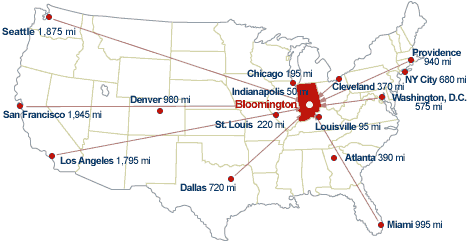
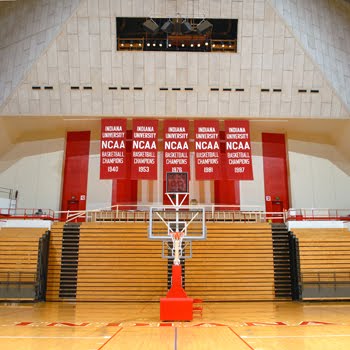








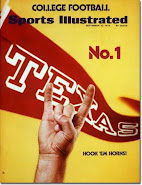


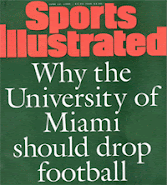


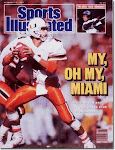

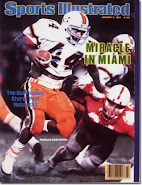
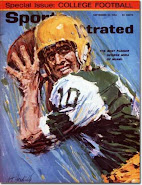
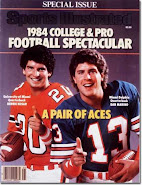



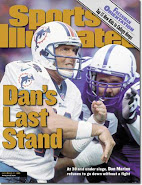
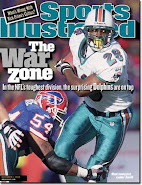






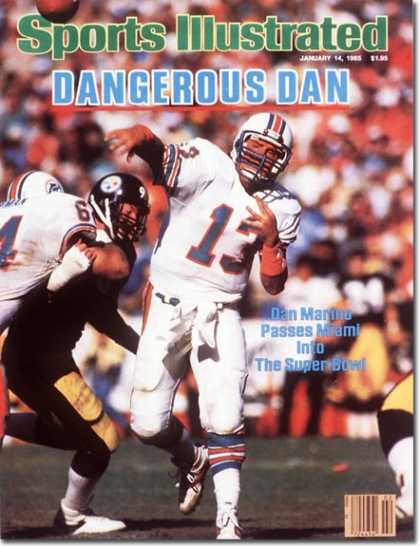

+Sep+10,+1984.jpg)
